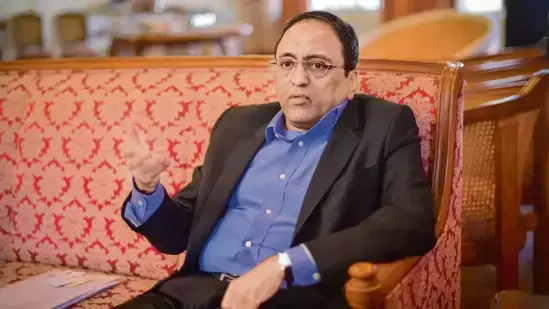
Title: If you ask an IT employee to come to office, he says ‘bye’: L&T Chairman
The modern workforce has undergone a significant transformation in recent years, with the rise of remote work and flexible working arrangements. While some companies have struggled to adapt to this shift, others have seen the benefits of allowing employees to work from home. Recently, L&T Chairman SN Subrahmanyan joined the conversation, sharing his thoughts on the current state of working from home. In an interview, Subrahmanyan made some thought-provoking comments that have sparked a debate among HR professionals and business leaders.
Subrahmanyan, who has been with L&T since 1983, shared a story about his early days in the company. He recalled that when he joined, his boss told him that if he was from Chennai, he would have to go to Delhi to work. This anecdote sets the stage for his more recent comment, which has garnered significant attention. When asked about working from home, Subrahmanyan said, “Today, if you ask an IT employee to come to the office and work, he says ‘bye’ (he resigns).” This statement has sparked a mix of reactions, with some seeing it as a commentary on the changing attitudes towards work and others viewing it as a criticism of the growing trend towards remote work.
On the surface, Subrahmanyan’s comment may seem like a straightforward observation about the modern workforce. However, upon closer examination, it reveals a deeper insight into the changing dynamics between employers and employees. The rise of remote work has given employees more flexibility and autonomy, allowing them to work from anywhere, at any time. This shift has led to a new era of work-life balance, where employees are able to prioritize their personal and professional needs with greater ease.
Subrahmanyan’s comment can be seen as a reflection of the growing desire among employees for work-life balance. In the past, employees were expected to be available 24/7, with many putting in long hours at the office. The rise of remote work has changed this dynamic, allowing employees to set their own schedules and work at times that are most productive for them. For many, this means being able to work from home, where they can avoid the distractions and commutes associated with traditional office work.
However, Subrahmanyan’s comment can also be interpreted as a criticism of the growing trend towards remote work. Some argue that the lack of face-to-face interaction and socialization can lead to feelings of isolation and disconnection. Others point to the potential negative impact on company culture and team dynamics. While these concerns are valid, they do not necessarily negate the benefits of remote work.
In fact, many companies have reported significant benefits from allowing employees to work from home. These include increased productivity, reduced turnover, and improved employee satisfaction. A study by Gartner found that employees who worked remotely at least half of the time were more likely to report being satisfied with their job and less likely to leave their employer.
So, what does Subrahmanyan’s comment mean for the future of work? While his statement may have sparked a debate, it also highlights the need for companies to adapt to the changing needs of their employees. As the workforce continues to evolve, employers will need to find new ways to attract and retain top talent.
One potential solution is to adopt a hybrid approach, where employees have the option to work from home or from the office. This allows employees to benefit from the flexibility of remote work while still maintaining face-to-face interaction and socialization. Another approach is to focus on building a strong company culture, where employees feel valued and supported regardless of whether they are working from home or in the office.
In conclusion, Subrahmanyan’s comment on working from home has sparked a valuable conversation about the future of work. While his statement may have been provocative, it also highlights the need for employers to adapt to the changing needs of their employees. As the workforce continues to evolve, it will be important for companies to find new ways to attract and retain top talent. By adopting flexible working arrangements and focusing on building a strong company culture, employers can create a work environment that is both productive and fulfilling for their employees.






